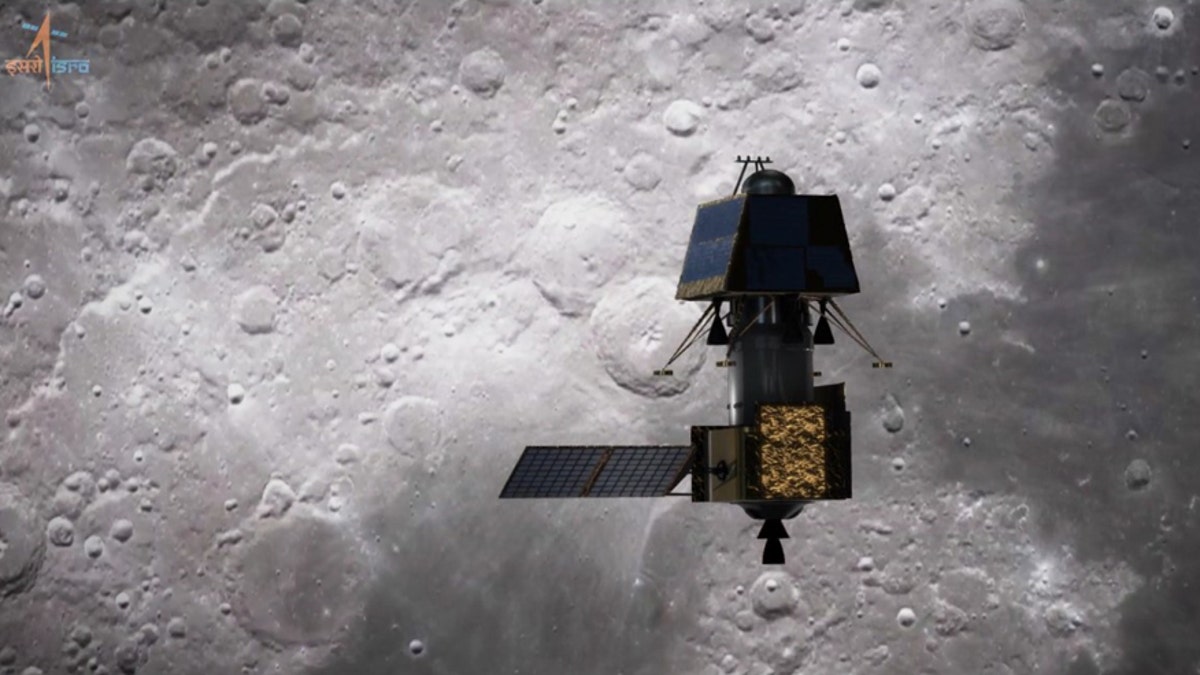50 years after Apollo 11, Neil Armstrong’s sons describe watching their dad walk on the Moon
50 years after the Apollo 11 mission, Neil Armstrong’s sons Mark and Rick describe the day when their father walked on the Moon.
Time is running out for India’s space agency to make contact with the country’s Vikram lander, which made a nerve-wracking descent to the surface of the Moon earlier this month.
The Indian Space Research Organization lost contact with the unmanned probe when it was in the final stage of an audacious Moon landing attempt on Sept. 6. Communication with the lander was lost when it was just 1.3 miles from the lunar surface.
Vikram was subsequently spotted on the lunar surface by the space agency's Chandrayaan-2 orbiter and technicians have since been working to establish a connection with it. However, they are in a race against time to contact the lander, which contains the six-wheeled Pragyan rover.
INDIA LOSES CONTACT WITH VIKRAM PROBE IN MOON LANDING ATTEMPT
Vikram and its rover have a lifespan of one lunar day, which is equal to 14 Earth days, according to ISRO. This means that the probe will reach the end of its life on Sept. 20.
It is not yet clear what damage the lander suffered during its descent. The U.S., Russia and China are the only other countries to have successfully landed on the Moon.
Spaceflight Now reports that NASA’s Lunar Reconnaissance Orbiter was scheduled to fly over the Vikram landing site on Sept. 17 and capture images of the probe on the Moon’s surface.
INDIA FINDS MISSING VIKRAM PROBE ON THE SURFACE OF THE MOON
ISRO’s Chandrayaan-2 orbiter will continue its mission for a year.

Artist's impression of Chandrayaan-2 from ISRO video. (ISRO)
The roughly $140 million Chandrayaan-2 mission is intended to study permanently shadowed moon craters that are thought to contain water deposits that were confirmed by the Chandrayaan-1 mission in 2008.
Earlier this year, Israel's uncrewed Beresheet spacecraft crashed during a Moon landing attempt.
VIKRAM MOON LANDER: THE ANXIOUS WAIT FOR A SIGNAL FROM LUNAR SURFACE
The Chandrayaan-2 spacecraft carrying the Vikram Lander launched from Sriharikota in southern India on July 22.
India's first lunar mission, Chandrayaan-1, orbited the Moon in 2008 but did not land there. It did, however, launch an impact probe that was intentionally crashed into the Moon.
Chandrayaan-1 operated for 312 days.
APOLLO 11’S MICHAEL COLLINS RECOUNTS THE CREW’S THREE-WEEK QUARANTINE ON THEIR RETURN FROM THE MOON
The Moon looms large for a number of countries’ space programs. China, for example, became the first country to successfully land a probe on the far side earlier this year when the Chang’e 4 lander reached the lunar surface on Jan. 2.
The U.S. also has its sights set on the celestial satellite and plans to land American astronauts, including the first woman, by 2024.
The Artemis program will also establish a sustainable human presence.
APOLLO 11: HOW 'DUMB LUCK' SAVED ICONIC MOON PHOTOS FROM BEING DESTROYED
NASA recently revealed details of its vision for the Artemis Moon Lander.
Speaking at Kennedy Space Center on the 50th anniversary of the Apollo 11 moon landing on July 20, Vice President Pence announced that the Orion capsule that will take American astronauts back to the satellite is ready.
Since Apollo 11 astronauts Neil Armstrong and Buzz Aldrin set foot on the surface, only 10 more men, all Americans, have walked there.
50 YEARS AFTER APOLLO 11, NEIL ARMSTRONG'S SONS DESCRIBE THE DAY THEIR DAD WALKED ON THE MOON
At a White House event in July, Aldrin voiced his disappointment over America’s space progress since the days of Apollo 11.
CLICK HERE TO GET THE FOX NEWS APP
Fox News’ Chris Ciaccia, Morgan Cheung and The Associated Press contributed to this article.
Follow James Rogers on Twitter @jamesjrogers

